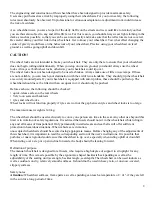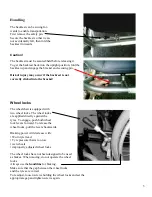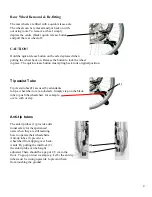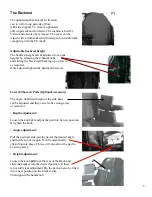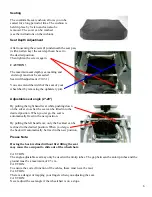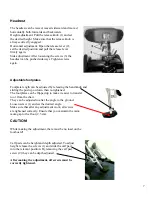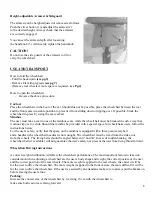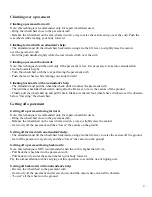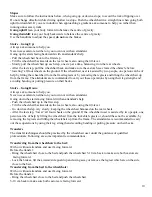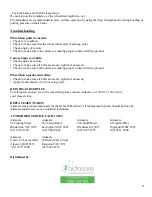
2
The engineering and construction of this wheelchair have been designed to provide maximum safety.
Users may put themselves at risk by improperly using their wheelchairs. For your own safety, the following
rules must absolutely be observed. Unprofessional or erroneous adaptation or adjustment work could increase
the risk of accidents.
As a wheelchair user, you are also part of the daily traffic on the streets and we would like to remind you that
you are thus also subject to any and all traffic laws. For this reason, you should always wear light clothing in the
dark as much as possible, so that you can be seen more easily and make sure that the reflectors are not covered.
Be careful during your first ride in this wheelchair. Get to know your wheelchair. Test what effect changing the
centre of gravity would have on the behaviour of your wheelchair. Practice using your wheelchair on level
ground, as well as going uphill and downhill.
CAUTION!
The wheel locks are not intended to brake your wheelchair. They are only there to ensure that your wheelchair
does not begin rolling unintentionally. When you stop on uneven ground, you should always use the wheel
locks. Always set both wheel locks, otherwise your wheelchair could tip over.
The wheel locks have not been designed to be used as brakes. Always make use of lifts or use ramps. If these
are not available, you can reach your destination with the aid of two attendants. They should grip the wheelchair
at securely mounted parts. If your wheelchair is equipped with anti-tip tubes, these should be pulled up. The
wheelchair should never be lifted with an occupant in it, it should only be pushed.
Before each use, the following should be checked:
• quick-release axles on the rear wheels
• Velcro on seats and backrests
• tyres and wheel locks
Wheel locks will not function properly if tyres are worn or the gap between tyres and wheel locks is too large.
The maximum user weight is 140 kg.
The wheelchair should be used exclusively to convey one person at a time in the seat. Any other use beyond this
limit is in violation of safety regulations. It is advised that users should not sit in the wheelchair while riding in
any and all means of transportation! Only permanently installed seats and seat belts will offer sufficient
protection in hazardous situations. When vehicles are in motion,
unoccupied wheelchairs should be secured using appropriate means. Before changing any of the adjustments of
this wheelchair, it is important to read the corresponding section of the user’s instructions. It is possible that
potholes or uneven ground could cause this wheelchair to tip over, especially when riding uphill or downhill.
When riding over a step or up an incline forwards, the body should be leaning forward.
Definition of purpose:
The manual wheelchair is designed for all users, who require a high degree of support to sit upright for any
length of time. This is made possible by the ergonomic, shaped backrests/back padding as well as the
adjustability of the seating unit (seat angle, backrest angle, seat depth).The wheelchair can be used indoors as
well as outdoors on dry, relatively smooth surfaces. It should not be used in heavy rain, or on snow-covered,
slippery surfaces.
Safety notes
Attention:
Wheelchair surfaces, frame parts as well as padding can reach a temperature of > 41°, if they are left
in the sun for a long period of time.


